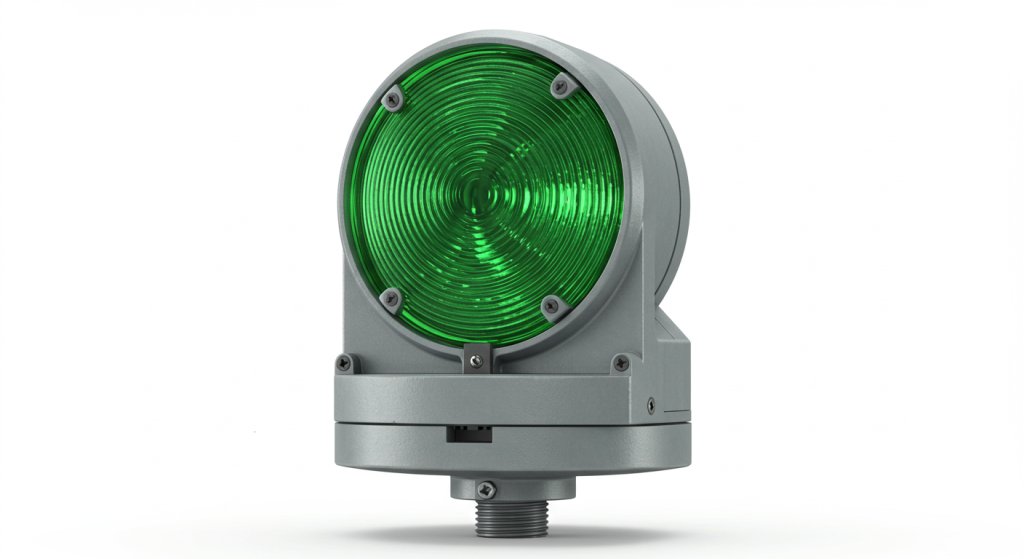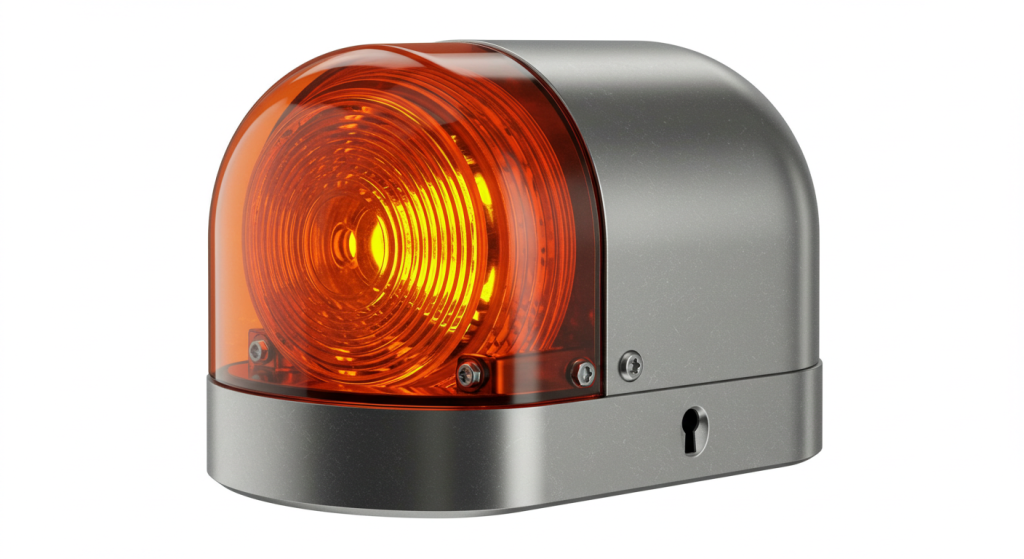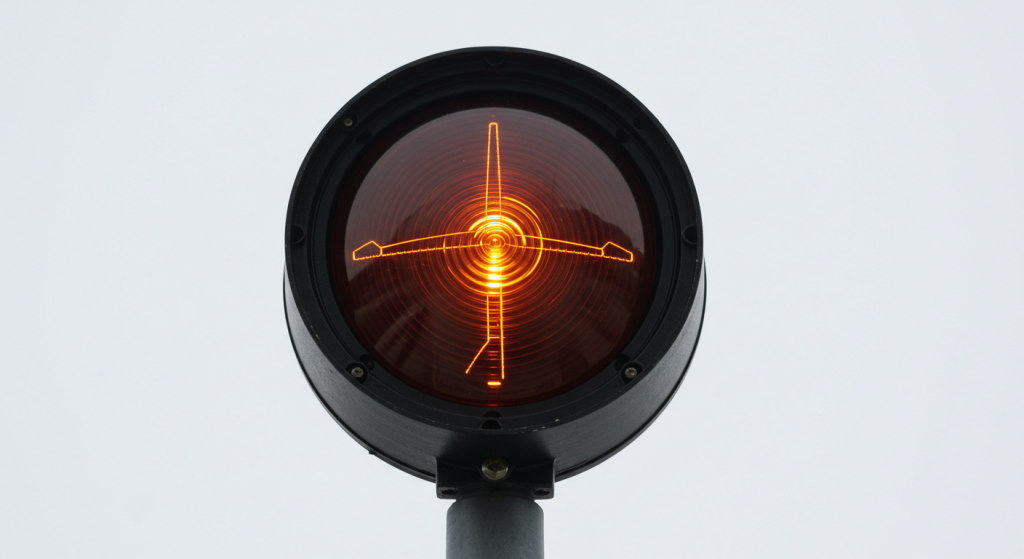Introduction:
Airport rotating beacons play a crucial role in ensuring the safety of aviation operations. These beacons provide a clear and visible signal to pilots, guiding them in low visibility conditions. With numerous options available in the market, choosing the right airport rotating beacon can be a daunting task. This article aims to provide a detailed analysis of the factors to consider when selecting an airport rotating beacon, along with a case study to illustrate the importance of making an informed decision.

- Understanding the Purpose:
Before delving into the specifics, it is essential to understand the purpose of an airport rotating beacon. These beacons are primarily used to:
a. Enhance runway visibility during low visibility conditions
b. Assist pilots in maintaining a safe distance from the runway
c. Serve as a navigation aid for aircraft during approach and departure
- Types of Airport landing strip lights:
There are various types of Airport obstruction lights available, each with its own set of features and advantages. The most common types include:
a. LED Beacons: Known for their energy efficiency and long lifespan, LED beacons are a popular choice among airports.
b. Halogen Beacons: Offering a bright and intense light, halogen beacons are suitable for airports with high visibility requirements.
c. Solar-Powered Beacons: Environmentally friendly and cost-effective, solar-powered beacons can be a great choice for remote airports.
- Factors to Consider When Choosing an Airport Rotating Beacon:
a. Visibility Range: Ensure that the beacon’s visibility range meets the requirements of your airport. The range can vary from 5 to 10 miles, depending on the model.
b. Light Intensity: Choose a beacon with a light intensity that is suitable for your airport’s specific needs. Higher intensity beacons are ideal for airports with challenging weather conditions.
c. Power Source: Consider the power source that is most suitable for your airport. Solar-powered beacons are a great option for remote locations, while traditional electrical beacons may be more suitable for larger airports.
d. Maintenance Requirements: Look for beacons that require minimal maintenance and have a long lifespan to ensure cost-effectiveness in the long run. - Case Study: XYZ Airport
XYZ Airport, a medium-sized airport in the United States, faced challenges in maintaining runway visibility during foggy conditions. The airport’s previous rotating beacon had limited visibility range and required frequent maintenance. After extensive research, the airport management decided to invest in a new LED beacon with a higher visibility range and lower maintenance requirements.

The new beacon significantly improved runway visibility, reducing the number of cancelled flights during foggy conditions. Additionally, the lower maintenance requirements resulted in cost savings for the airport.
I. Understanding Airport Rotating Beacons
- Definition: An airport rotating beacon is a type of navigational aid that emits a rotating light, visible from long distances, to guide pilots during nighttime operations.
- Purpose: The primary function of a rotating beacon is to enhance the visibility of an airport or runway, enabling pilots to identify the location and approach path with ease.
- Types: There are several types of rotating beacons available, including low-intensity and high-intensity beacons, with different colors and configurations.
II. Factors Influencing Airport Rotating Beacon Cost
- Size and intensity: The size and intensity of the beacon can significantly impact the cost. Larger and more intense beacons generally require more energy and are more expensive to purchase and maintain.
- Installation cost: The cost of installing a rotating beacon varies depending on factors such as the location, terrain, and infrastructure availability.
- Maintenance and operation: The ongoing costs of maintaining and operating a rotating beacon include energy consumption, bulb replacement, and periodic maintenance services.
- Regulatory compliance: Adhering to local and international aviation regulations may require additional costs, such as certifications and inspections.

III. Case Studies
- Case Study 1: A small regional airport decided to replace its aging rotating beacon with a high-intensity model. The new beacon increased visibility and reduced energy consumption by 30%. The initial cost of the beacon was 15,000, with installation expenses of 5,000. Over the first year, the airport saved $2,000 on energy costs.
- Case Study 2: A large international airport installed a new rotating beacon as part of a comprehensive runway lighting upgrade. The project involved purchasing a state-of-the-art beacon with advanced features, resulting in a higher initial cost of $25,000. However, the beacon’s long-term energy savings and reduced maintenance costs justified the investment.
IV. Cost-Benefit Analysis
- Safety benefits: Improved visibility and navigation aids provided by airport rotating beacons can significantly reduce the risk of accidents and enhance aviation safety.
- Economic benefits: Although the initial investment may be substantial, the long-term savings on energy, maintenance, and potential insurance premiums can outweigh the costs.
- Regulatory compliance: Ensuring compliance with aviation regulations can prevent penalties and fines, contributing to the overall cost-effectiveness of airport rotating beacons.
I. Understanding Airport Rotating Beacon Prices
- Factors Influencing Prices:
Several factors contribute to the overall cost of an airport rotating beacon. These include:
a. Size and power output: Larger beacons with higher power output tend to be more expensive.
b. Material quality: High-quality materials ensure durability and longevity, impacting the price.
c. Brand reputation: Renowned brands often command a premium price due to their reliability and customer support.
d. Additional features: Beacrons with advanced features like remote monitoring or LED technology may cost more.
- Price Range:
The price of airport rotating beacons can vary significantly. For instance, a basic model might range from 1,000 to 5,000, while a premium beacon with advanced features can exceed $10,000.
II. Features of Airport Rotating Beacons
- Rotating Light: The primary function of an airport rotating beacon is to emit a rotating light, providing pilots with a visual reference for navigation.
- Power Source: Beacrons can be powered by various sources, including AC, DC, or solar energy. Solar-powered beacons are gaining popularity due to their environmental benefits and reduced maintenance costs.
- Control and Monitoring: Modern beacons come with built-in control panels and remote monitoring capabilities, allowing operators to manage and troubleshoot issues from a distance.
- Durability: High-quality materials and robust construction ensure that beacons can withstand harsh weather conditions and maintain their functionality over an extended period.
- Compliance: Airport rotating beacons must comply with international aviation standards, such as ICAO (International Civil Aviation Organization) and FAA (Federal Aviation Administration) regulations.
III. Real-Life Examples
- Case Study 1: An airport in a coastal region replaced its outdated rotating beacon with a new solar-powered model. The switch resulted in reduced maintenance costs and lower energy consumption, while still meeting compliance standards.
- Case Study 2: A major airline upgraded its fleet of rotating beacons to LED technology, improving visibility and reducing energy consumption. The investment paid off by enhancing the overall navigational experience for pilots.
- Importance of Airport Rotating Beacons:
Airport rotating beacons are designed to emit a continuous, rotating light, which serves as a visual aid for pilots. These beacons are crucial for the following reasons:
- Enhancing runway visibility: During night operations, the rotating light helps pilots identify the runway from a distance.
- Guiding aircraft: The rotating beacon provides a reference point for pilots, enabling them to align their aircraft with the runway centerline.
- Ensuring safety: The presence of rotating beacons reduces the risk of runway incursions and collisions.
- Factors to Consider When Purchasing Airport Rotating Beacons:
a. Intensity and Visibility:
The intensity and visibility of the rotating beacon are essential factors to consider. High-intensity beacons with a wide visibility range ensure that pilots can see the runway from greater distances. Look for beacons with lumens ranging from 20,000 to 30,000.
b. Color and Flashing Pattern:
The color and flashing pattern of the rotating beacon should be in compliance with international aviation standards. Typically, beacons are available in green, white, or red colors, with different flashing patterns to indicate various runway conditions.
c. Mounting and Installation:
Ensure that the rotating beacon is compatible with your airport’s infrastructure. Check for easy installation, maintenance, and compatibility with existing systems.
d. Manufacturer and Warranty:
Research reputable manufacturers known for producing high-quality airport rotating beacons. Look for products with a comprehensive warranty, which ensures that any potential defects or issues are addressed promptly.
- Product Details:
When selecting an airport rotating beacon, consider the following product details:
a. Beam Width: A wider beam width provides better visibility, allowing pilots to see the runway from a greater distance.
b. Material: High-quality materials ensure durability and resistance to harsh weather conditions.
c. Power Source: Choose beacons that are compatible with your airport’s power supply. Some models may require a separate power source or solar panels.
- Real-Life Case Studies:
a. Case Study 1: An airport in Europe replaced its aging rotating beacons with a new, high-intensity model. The upgraded beacons improved runway visibility, resulting in fewer runway incursions and a safer operational environment.
b. Case Study 2: A major airport in the United States upgraded its rotating beacons to comply with new international aviation standards. The updated beacons, featuring a green color and a specific flashing pattern, enhanced pilot guidance and safety.
- Understanding the Importance of Airport Rotating Beacons
Airport rotating beacons are designed to emit a rotating light that can be seen from a distance. This helps pilots identify the runway’s location, especially during low visibility conditions. The rotating beacon is typically mounted on a tall structure, such as a tower or mast, and is powered by a reliable and durable power source.
- Factors to Consider When Purchasing an Airport Rotating Beacon
a. Performance and Reliability:
Ensure that the beacon you choose meets the required performance standards set by aviation authorities. Look for beacons with high-intensity lamps, long-lasting bulbs, and a reliable power supply. A beacon with a lifespan of up to 10 years is ideal.
b. Visibility Range:
The visibility range of the beacon is an essential factor to consider. Ensure that the beacon can be seen from the required distance, as specified by the airport authority. Typically, the visibility range should be at least 10 nautical miles.
c. Mounting and Installation:
Check the mounting and installation requirements of the beacon. Ensure that the structure on which the beacon will be mounted is strong and stable enough to support its weight. Also, consider the ease of installation and maintenance.
d. Compliance with Aviation Regulations:
Ensure that the beacon you choose complies with the relevant aviation regulations and standards. This includes the International Civil Aviation Organization (ICAO) and Federal Aviation Administration (FAA) guidelines.
- Product Details: A Real-Life Case Study
Let’s consider a case study of an airport that recently purchased a new airport rotating beacon. The airport, which handles a significant number of flights daily, required a beacon with the following specifications:
- Visibility range: 12 nautical miles
- High-intensity lamp with a lifespan of 10 years
- Easy installation and maintenance
- Compliance with ICAO and FAA regulations
After thorough research and evaluation, the airport selected a beacon from a reputable manufacturer. The beacon was installed on a 50-meter tall tower and has been functioning flawlessly since its installation. The airport’s pilots have reported improved visibility and safety during low visibility conditions.
- Understanding Airport Rotating Beacons
1.1 Definition:
An airport rotating beacon is a type of lighting system designed to provide continuous, rotating light at airports. It is typically mounted on a tower or a building and is visible from a distance of up to 10 miles.
1.2 Specifications:
- Material: The beacon is usually made of weather-resistant materials like aluminum or stainless steel.
- Light Source: Modern beacons use LED technology for energy efficiency and longer lifespan.
- Power Consumption: The power consumption of an airport rotating beacon varies depending on the light source and size of the beacon. Generally, it ranges from 10 to 50 watts.
- Color: The standard color for airport rotating beacons is white, but other colors like red or green may be used for specific purposes.
- Uses of Airport Rotating Beacons
2.1 Runway Approach:
Airport rotating beacons play a vital role in guiding pilots during the approach phase. The rotating light helps pilots maintain the correct altitude and alignment with the runway.
2.2 Runway Lighting:
During night operations, airport rotating beacons are used in conjunction with other runway lighting systems to enhance visibility and ensure safe landings.
2.3 Obstacle Lighting:
Airport rotating beacons are also used to highlight potential obstacles around the airport, such as tall buildings or trees, to prevent mid-air collisions.
- Case Studies
3.1 Case Study 1: John F. Kennedy International Airport (JFK)
JFK is one of the busiest airports in the world, handling millions of passengers annually. The airport employs a state-of-the-art rotating beacon system to ensure safe operations. The system consists of 18 beacons, each equipped with LED technology for energy efficiency. The beacons are strategically placed to provide optimal coverage across the airport.
3.2 Case Study 2: Dubai International Airport (DXB)
Dubai International Airport is known for its advanced lighting systems. The airport uses a combination of rotating beacons and other lighting systems to guide pilots during night operations. The rotating beacons are mounted on tall towers and are visible from a distance of up to 12 miles.
Conclusion:
Choosing the right airport rotating beacon is crucial for ensuring the safety and efficiency of aviation operations. By considering factors such as visibility range, light intensity, power source, and maintenance requirements, airports can make an informed decision. The case study of XYZ Airport highlights the benefits of investing in a high-quality beacon, leading to improved runway visibility and cost savings.